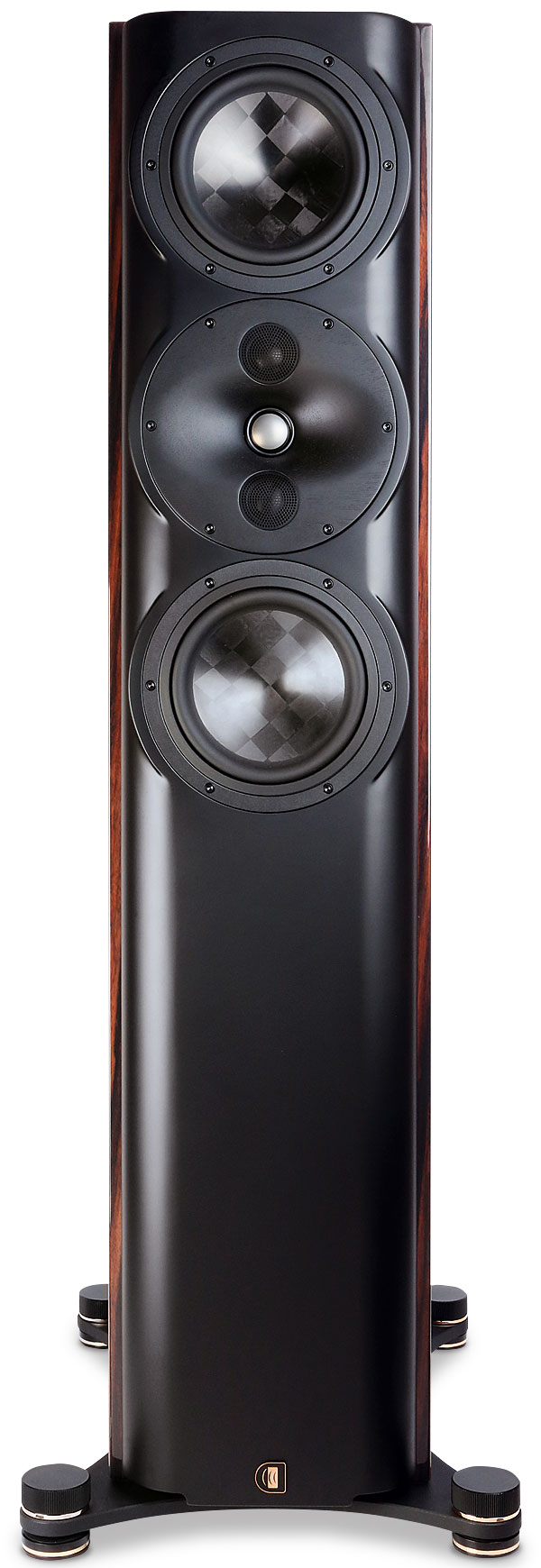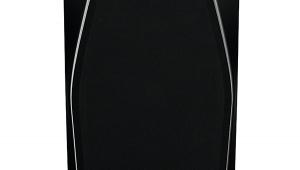Perlisten Audio S5t Loudspeaker

 Derived from Perlisten's S7t flagship, and featuring the same DPC array, the S5t is simply more 'user-friendly'
Derived from Perlisten's S7t flagship, and featuring the same DPC array, the S5t is simply more 'user-friendly'
Few loudspeaker brands come racing from the gate, but Perlisten, from Wisconsin, US, has gone from unheard of to a serious challenger in very short order. First up, in 2022, was the EISA Award-winning S7t floorstander [HFN Apr '22], which introduced the company as a high-end marque, and this was quickly followed by its second-tier R series [HFN Aug '22]. Now we get the S5t, essentially a slimmed down version of the S7t, with all the appeal that this entails.
As Perlisten will have it, requests for a version of the S7t more suited to smaller rooms had become 'too numerous to ignore', so the S5t was born. Selling for £13,600 in its standard black and white gloss finishes, or £15,800 for the Ebony option shown here, it really does look like a baby brother to the S7t. In fact, the only visual difference between them is that two drivers have gone missing…
Power Of Two
Which ones? Not any from the DPC (Directivity Pattern Control) array, as this is a Perlisten speciality, a version of which can be found on all its speakers. Rather, it's the S7t's woofers, which exclusively covered the bass range up to 500Hz, that have been culled, leaving the S5t with a pair of bass/mid units crossing over at 1.2kHz.
Going from four 180mm drivers to two has enabled Perlisten to make the S5t around 20cm shorter, which on paper doesn't seem like much but visually makes a significant difference. The width of 24cm is the same, so it's not particularly portly, and depth remains a more sizeable 40cm. Cabinet weight, for what it's worth, has been trimmed to 43.2kg from 55.7kg.

The effect of removing the two dedicated bass drivers impacts the specification, although Perlisten still rates the low-frequency extension at a 'typical in-room' 20Hz (with the speaker operating in bass reflex mode), or 23Hz (sealed box). Meanwhile, side-facing vents toward the bottom of the cabinet relate to the S5t's internal Helmholtz tubes, which can be left fully open or sealed.
Closed Sauce
Interestingly, another specification change concerns the high-frequency response, which here is 32kHz as opposed to the S7t's 37kHz, suggesting that although the S5t features the 'same exquisite DPC array', the speaker has been further 'tuned' to compensate for its reduced driver complement.
Like KEF's UniQ or B&W's Tweeter on Top, DPC is Perlisten's secret sauce. The result of an extensive development process, including Comsol acoustic modelling, it features a central 28mm beryllium dome tweeter flanked by 28mm thin-ply carbon diaphragm (TPCD) midrange drivers above and below. All three units sit within a large, dished fibreglass waveguide, which – along with the crossover network and driver position – aims to ensure the desired horizontal and vertical dispersion of the speaker's upper-mid and treble.
While the S5t is smaller than the S7t, it's lost none of the bigger brother's sense of style. The look perhaps fits the UK/European idea of an 'American' speaker, particularly with the distinctive checkerboard finish to the (also TPCD) bass/mid drivers. But even if this floorstander appears less 'swish' than some high-price rivals, build quality and attention to detail is excellent.
The curved front baffle, finished in black, blends well with the gloss cabinet sides, while the rear-panel speaker binding posts for its split crossover are robust. The circular feet that – in conjunction with a steel plinth – support the cabinet offer easy adjustment of levelling, and individual speaker grilles let you choose which, if any, of the S5t's drivers you want to cover up.
Once again this Perlisten speaker earns THX Dominus certification, meaning it has passed muster for use in home theatre systems at sizes of up to 184 cubic metres. Sensitivity is quoted at a useful 89.5dB, but with a nominal impedance figure of 4ohm you'll want to use it with the sort of amplification its price tag and size implies.
![]() Crisp 'N' Dry
Crisp 'N' Dry
Even in bass reflex mode, the S5t doesn't deliver the sort of bass opulence you might idly imagine from a speaker of its size and specification. It favours neutrality over warmth, the low-end greeting you with a firm handshake rather than an enveloping hug. Sometimes it can even sound a little dry, albeit in complete control, and next to that there's so much else to savour: a wide, high soundstage; excellent detail across the audio band; transient attack; and more. Above all, perhaps, it's supremely revealing.

























































